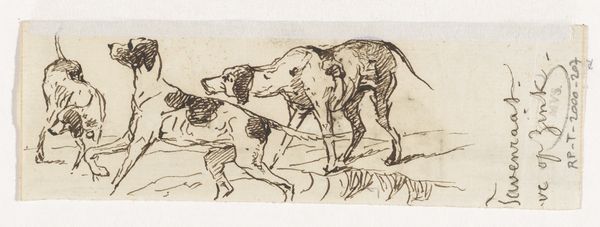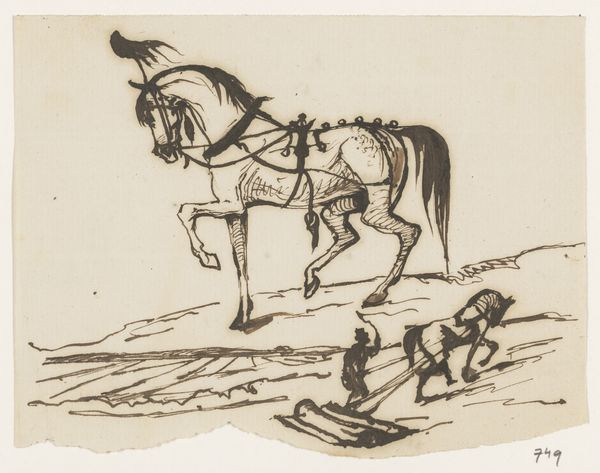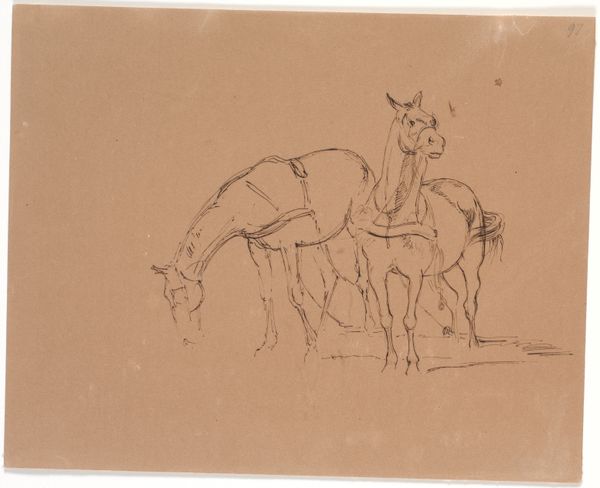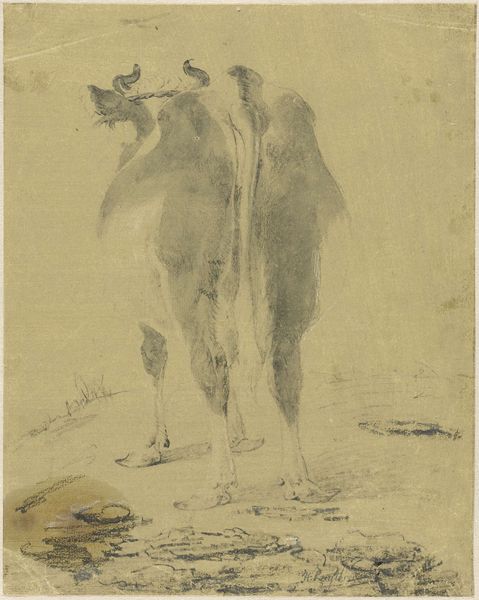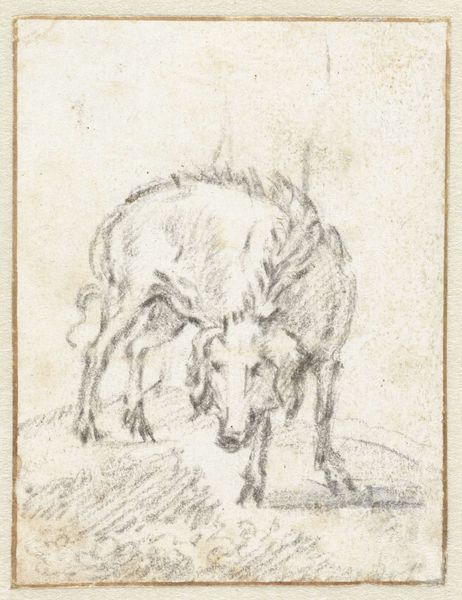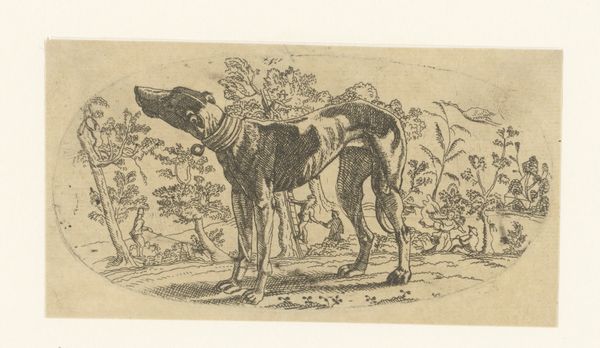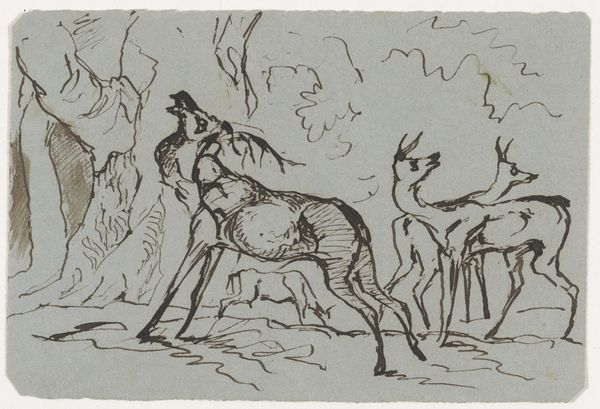
drawing, paper, pencil
#
drawing
#
pen sketch
#
pencil sketch
#
landscape
#
figuration
#
paper
#
pencil
#
horse
Dimensions: height 158 mm, width 115 mm
Copyright: Rijks Museum: Open Domain
Curator: Theo Nieuwenhuis created this drawing, entitled "Twee paarden en een anker," sometime between 1876 and 1951. It's currently held in the Rijksmuseum. It's rendered in pencil and pen on paper. What's your first reaction to it? Editor: Stark. It feels almost melancholic, with that sparsely rendered anchor below the horses. It speaks of labor and… stillness. Curator: Absolutely. I see that too. Consider the socio-economic context; we must understand how images of labor were consumed. Drawing on working-class subjects may implicate critical engagement with industrial production and exploitation. We can see the mark making process that is integral to the formation of this image: you have a definite foreground and background here, with horses heavily labored by distinct bold strokes and the anchor that contrasts to them because it is almost transparent. It highlights the distinction of the making here with raw materials. Editor: I'm curious about that contrast. I’d say the position of the anchor, rendered with such lightness, introduces a symbolic weight, a disruption to any idealized rural image. Are these working horses, symbols of relentless labor? Or, considering Nieuwenhuis' dates, could there be an invocation to wartime, to displacement? Curator: Precisely. It brings forth questions about production itself. The deliberate yet economic use of pencil and pen—the inherent accessibility of the medium—suggests a democratic approach to image-making. He could create multiples, share them easily. What choices does the artist want us to analyze first? I feel that materiality should be understood more contextually here. The choice of a paper reflects constraints perhaps imposed to the artist. Editor: So, you’re emphasizing that his deliberate approach highlights how resources and means define access and impact meaning. I agree it is worth questioning the image that the artist shares of two horses against an anchor by relating to capitalism and war and questioning what statement is meant to come forth, especially now in the current political environment. Curator: Right. It allows us to analyze the societal constructs during Nieuwenhuis's lifetime, the same concepts that are brought in our actual reality today. I was challenged when analyzing that drawing because there are different questions brought when studying its materiality: labor division, consumption habits... Editor: Agreed. "Twee paarden en een anker" asks of us as the viewer: how do we weigh the unseen forces anchoring both lives and histories? The impact in art of political topics cannot be understated, and it's through them that discussions like this happen. Curator: Indeed. And, that’s why, analyzing through its material construction offers key ways of understanding the piece further and opening different doors of thinking about the piece, as well as other artistic pieces to come.
Comments
No comments
Be the first to comment and join the conversation on the ultimate creative platform.


